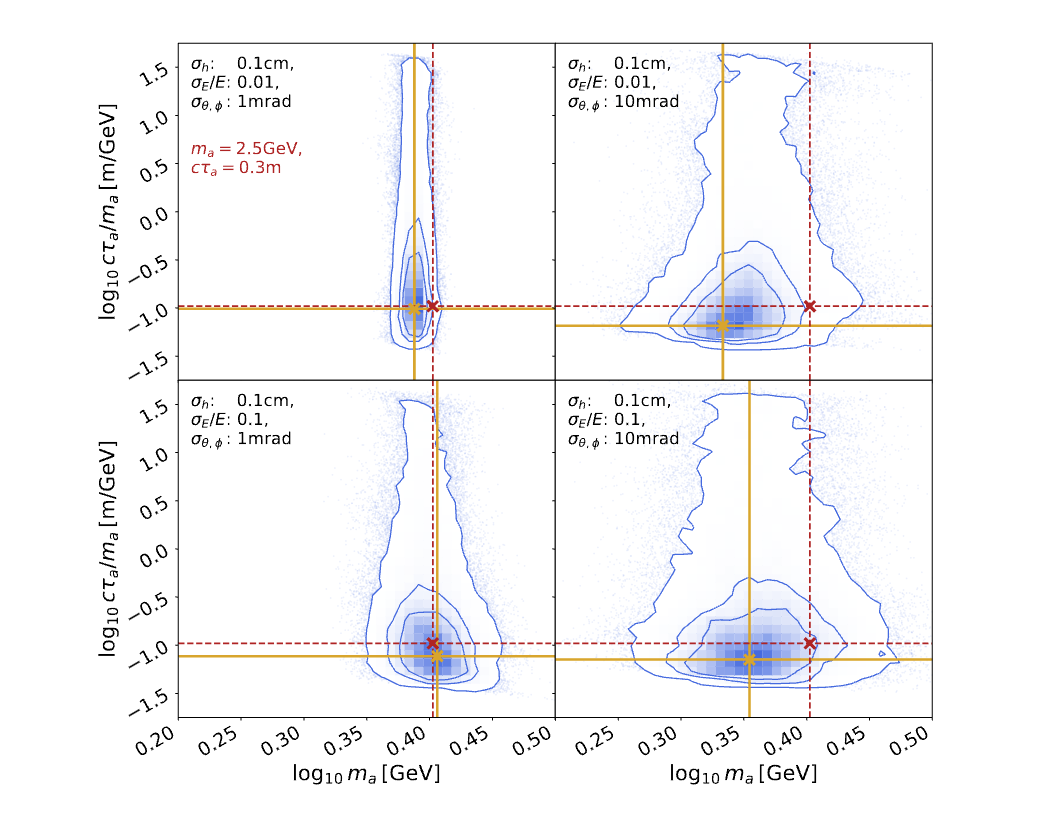Reconstructing axion-like particles from beam dumps with simulation-based inference
Researches from three different institutes at KIT have developed a new method to study the properties of a yet hypothetical particle that could shed light on the nature of dark matter and other fundamental phenomena: The particle, called an axion-like particle (ALP), is predicted by theory to decay into two photons but has not been detected yet. The researchers from the Institute of Experimental Particle Physics (ETP), the Institute for Theoretical Particle Physics (TTP), and the Institute for Astroparticle Physics (IAP), used a machine learning technique to reconstruct the properties of ALPs from simulated data. They assumed that ALPs are produced in a beam-dump experiment, where a high-energy beam of protons hits a target and creates a shower of particles. Some of these particles could decay into ALPs, which would travel a long distance before decaying into photons. The photons would then hit a detector, where their energy and direction would be measured.
However, the exact position where the ALPs decay is unknown, which makes it difficult to infer their mass and lifetime. The researchers used a type of neural network, called a conditional invertible neural network, to learn the relationship between the ALP parameters and the photon observations. The neural network can then estimate the probability distribution of the ALP parameters for a given set of events. The researchers found that their simulation-based inference method performs much better than conventional methods based on simple variables, such as the invariant mass, the opening angle between the photons or the distance from the target. The neural network can also provide reliable uncertainty estimates, which are crucial for statistical inference. Furthermore, the neural network can be easily adapted to different experimental settings, making it a useful tool for optimizing the design of future experiments like SHADOWS or SHiP that are currently discussed as the next generation beam-dump experiments at CERN.
“The interdisciplinary team was instrumental to work on all aspects of the project. I hope that this method will help to design the best detector for the future CERN beam-dump experiments” says team-member Prof. Ferber from the Institute of Experimental Particle Physics (ETP). Their work is available as a preprint, and all code and the simulated data to reproduce the results can be found here.
Contact: Prof. Torben Ferber


